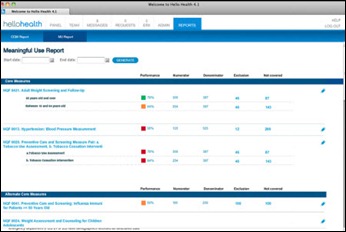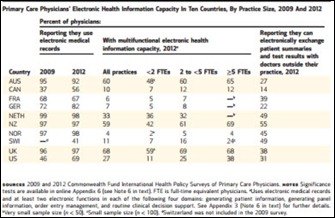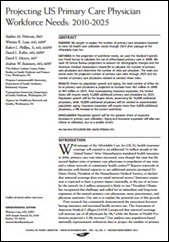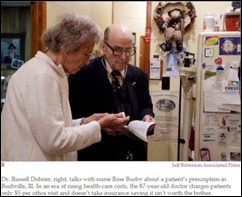News 11/27/12
NextGen Healthcare and Microsoft launch NextGen MedicineCabinet app, a free app for the Windows 8 platform for the management of personal medication records.
Thirty-eight percent of family physicians participating in AAFP’s Family Practice Management EHR user satisfaction survey are “highly satisfied” with their EHRs while another 37 percent say they “like” their EHR. Praxis was the most highly rank EHR, followed by Medent, HealthConnect, Amazing Charts, and SOAPware. Almost half of the 3,088 participating physicians were from 1-10 physician groups; almost as many came for practices with more than 20 physicians.
Pediatricians, meanwhile, seem to be behind other specialties in terms of EHR adoption. A self-reported 41 percent say they use an EHR, though only 25 percent of those met the definition of a basic EHR and a mere six percent were considered fully functional. The biggest barriers to adoption: financial and productivity concerns and finding systems that meet pediatric-specific needs.
HIMSS honors Dr. Jeremy Bradley Family Practice (KY) a winner of the 2012 Ambulatory HIMSS Davis Award of Excellence for its use of EHR to deliver evidence-based high quality care with measureable outcomes.
Hello Health, a provider of a free EHR platform, secures $11.5 million in financing led by First Generation Capital.
A JAMA-published study finds that patients using a patient portal had a higher number of office visits and telephone encounters than non-users. The study, which reviewed the use of MyHealthManager by patients of Kaiser Permanente Colorado, concludes that just putting up a portal doesn’t reduce demand for clinical services, and in fact may have the opposite effect.
A Journal of General Internal Medicine study offers a more positive spin on the use of HIT, concluding that patients who received personalized messages about their risk of cardiovascular disease generated from EHR data are more likely to get medication to reduce their cholesterol.

























The article about Pediatric Associates in CA has a nugget with a potentially outsized impact: the implication that VFC vaccines…